Wayne C. Allen's Blog, page 13
August 2, 2022
Blocks to Passion
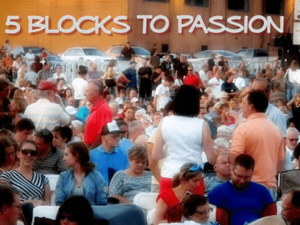
Blocks to Passion — we are brought up to make finding and living our passion difficult. Here are 5 ways this happens, and some alternatives

Want to learn more about living a full and meaningful life?
Want to have the best relationship ever?
Check out my books
It seems funny to me that people argue against discovering and living their passion. Let’s look at a couple of distractions, and some ways to find your way through.
I Don’t KnowWe all have a pull — a desire — for things like passion and vocation to make sense.
Here’s a hint: they don’t.
I like to say, you can’t feel a thought, and you can’t think a feeling.
Despite being whole beings, we are also “sided.” As in a coin — there’s no such thing as a one sided coin.
We in the West are conditioned to look to our thoughts, our explanations, and belatedly (or not at all) to consider our feelings — our needs — our desires.
Thus, for most people — thinking is a given, and feeling needs work. To discover our passion is to learn to trust our feelings, body senses, intuition, and “heart.”The vast, vast majority of humanity never got guidance in dealing with one’s passion. Most of us were trained to follow tribal rules and directions. passion be damned.
I’m the first in my family to get a BA, followed by a couple of Masters degrees. My parents prized intelligence, and encouraged me to go to Elmhurst U.
That being said, my mom had plans for me and my little brain — she expected me to go from Elmhurst to Seminary, and then to become a Minister. I thought so, too. Until I lost interest. I “disappointed her” by first working at a bank, and then opening a photography studio.
While I ultimately did become a Minister, I tired of the Church and the games, and opened a counselling practice.
Mom also never quite “got” the whole counsellor thing.Anyway, many people carry on family traditions, becoming lawyers, doctors, academics, etc. Now, this is not to say this is “wrong.” The only thing is, did you choose your path, or did you just go along for the ride?
When I ask people about their passion and their vocation, most tell me they have no clue.I always respond, “If you pretended that you did know, what would it be?”
99% can tell me.
What this is all about is that, as soon as we’re pretend that we are just speculating, (and of course, if I’m imagining, no one is going to judge me, or try to stop me…) out pops what’s important to us — what we’re passionate about.
Another way passion shows itself is by what we choose to give single-minded focus to.Darbella is like this. She was an excellent teacher because of her focus on being there for her kids. Since she retired, she’s quite focussed on honing her photography / editing skills.
I had a friend who followed the above pattern. When I asked, she didn’t know, big sigh, etc. I asked the speculation question, and she came up with a great project — to go to Japan (where she’d lived) and to start a web project to replace photos people lost in the 2011 Tsunami.
Guess what? She decided to go, and it changed her life.
Take Away: As yourself the “speculation” question.
When your mind rebels and tells you you’re being silly, just breathe, and see what’s there. Something will occur to you — something with a strong pull in your body. Your heart. Listen, and then ask yourself: “What would be one step toward accomplishing this?”
I’m Being Blocked by.… “them!”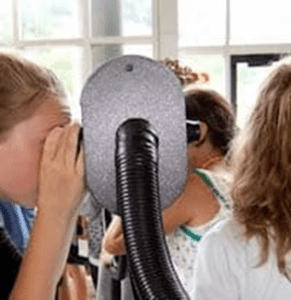
This is the “They are conspiring against me” position.
And you know what? Sometimes, they are!We once knew a woman I called “the almost-painter.” When she was a kid, her parents hated that she wanted to be an artist they , so controlled her physically, by banning art supplies. They said, “We support the arts; we are not artists!” As an adult, she took over for them, and blocked herself.
Adults can’t be controlled (short of physical violence) by others. We can do it to ourselves, by speaking in the voice of our parents and tribes — thus stopping ourselves while blaming them.Standing on our own two feet requires strength and persistence. We are fighting against stories that were implanted when we were especially susceptible to swallowing stuff whole.
The other thing is this: most other people don’t actually “have our best interest at heart.” Others want us to be “sort of” happy or content, but likely sub-consciously don’t want us to be happier then they are. Or more successful.
Doing so raises a big question for them: And what am I doing with MY life?Many are so committed to their world-view that they are willing to go to extremes to try to keep you doing what they are doing — to make you behave, conform. And when you wander from their norm, they accuse you of being “Out of (their) control.”
So what?Growing up is this: You question yourself, govern yourself, and walk your path. You choose to walk with those who walk beside you, and leave behind the critics.Hard? It can be, but doesn’t have to be.
Take away: Ask yourself: whose opinion do I value more than my own? Let go of that! How? Turn your attention, relentlessly, to who you are and what you want to accomplish with your life.
Discover the few folk around you who are on your side — who encourage you to experiment, to play, to do new things. Listen to their comments, and go inside and see how it “resonates.”
Focus on you, and what pulls you. Ground yourself, breathe into your belly, and let the energy move. You’ll see a next step. Take it.
In other words, fighting the people who are trying to hold you back is silly. You don’t need to be “right” You need to act in accordance with your heart and your passion.
What If I get it Wrong?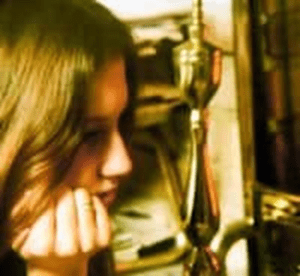
Most of us live in countries where anything is possible, so I’m not sure what following our passion costs us besides time (and money.) None of us are locked into anything.
One of my favourite clients from years ago, a dental hygienist, decided in her 40s that she wanted to be a dentist. She needed to go back to High School to get some science and math credits. She had herself convinced that she was dumb.
I encouraged her to go to HS, study, and see what happened. She did.
She ground her way through the HS courses, and got into University. Got a BA. Got a Masters. Discovered that she was pretty much an ‘A’ student. After one rejection, got into Dental College. She graduated in her mid 50s, and is now a practicing dentist and teacher.
She had all the tools in place to stop herself. And she didn’t.This fear of being / doing it “wrong” also happens when the time comes to end relationships. “What if the next one is worse?”
Well, did you learn anything from the former relationship? Can you imagine being more selective and mature (you ARE older…) now than then?
All the negative talk is normal. We’ve discussed this!When I paint, for example, the first few days, the voice in my head screams that “this time,” I won’t be able to get it “right.” I look at what I’m doing, and I agree. What’s in front of me sucks.
I keep painting.
And then, it doesn’t suck. The underpainting is just the structure of what happens next. So long as I keep painting, things sort themselves out. My creativity and hand knows what to do, so long as I don’t let my critic stop me.
Take away: there is no “wrong” choice. There’s always something to learn, and when the learning stops, when the passion stops, it’s time to take another path.
Look at how you are scaring yourself, stopping yourself, from accomplishing something with your passion. As with my friend, “go to High School” anyway. Find that first step, start, walk, paint, sing, do. Get the ticket for the flight to Japan!
Here’s What I Don’t Want
Our little egos are clever. They know that if they can keep us “listing” — stuck in our heads concocting list of what we don’t want, focussed on what could go wrong, we’ll stay stuck, AND think we are making progress!
Some people have hundreds of reasons for not doing something; hundreds of things they don’t want.A client once said, “I don’t want my daughter to turn out like me!”I replied, “OK, so I guess it would be all right for her to be a crack whore on Yonge Street?”
She was horrified. I said, “Well, she wouldn’t be like you… now maybe you might tell me what you do want for her, not what you don’t.”
This is not a prescription for ignoring risk. It’s a prescription for acting positively while being aware .Take away: listen to how you stop yourself. Are you creating endless lists? Blocking yourself over “What will people think?” Delaying acting until you can be 100% sure you’ll “get an ‘A’?”
Stop it!
No, really. Tell yourself, repeatedly, “Stop!” Then, “What can I do, right now, to get one step further down the path I have chosen?
I’m Scared!!! Yeah, well. Change is scary. Period. Discovering something new requires “leaving port.”
Yeah, well. Change is scary. Period. Discovering something new requires “leaving port.”Dar and I learned to kayak on the Ottawa River. We learned on the same set of rapids (including a couple that are class 5) the river rafts run. Scary water.
We spent 3 days learning paddle strokes, trying to learn the Eskimo Roll, (nope…) and learning to “wet exit” an overturned boat (yep…). And then, we got in the boats, and went where our instructor pointed.
We both dumped, once ( I paddled down a waterfall, and crashed into a river raft. It won.) and we both got down the river. I didn’t ever want to be in class 5 rapids again, and haven’t. Whitewater, yes, and have.
Was I scared, running those Class 5s? Nope. I was terrified! I, however, trusted our teacher to be there if I got into a mess, and I trusted my learnings and my balance. The fear was painful, and the satisfaction extreme.
Being scared is a way of being alive. We forget how scary learning to walk down stairs was. How scary learning to ride a bike was. How scary learning to swim was. We forget because the pleasure outweighed the fear.
But really, we got through it by getting through it… not by sitting there, scared and immobile, but by acting in spite of.Take away: really, the main take away for this and all the points is: life hurts. Living a full, rich, and deep life involves challenges, terror, confusion, and that flies in the face of our “feel good society.”
We move, really move, only by hopping from rung to rung, pain to pain, moment to moment. We do this by staying in the feeling, in the moment, and opening ourselves to all of it.
We discover that if we do, the difficulty becomes simplicity, and then we open to the next thing, and the next pain. We just “be scared,” and take another step.
You can stay stuck, and feel the pain of stuckness. Or, you can choose to take a step into uncertainty, and breathe, and open, and truly see.
Two paths. One, where you are is where you stay. The other –well — is open for anything.Facebook TwitterJune 27, 2022
Four Noble Truths — 4 Descriptors of the Way Life Is
 4 Descriptors of the Way Life Is–the Buddha’s age-old wisdom (the Four Noble Truths) is perfect for helping us see through the clouds of the last few years.
4 Descriptors of the Way Life Is–the Buddha’s age-old wisdom (the Four Noble Truths) is perfect for helping us see through the clouds of the last few years. Let’s have a look at the Buddha’s Four Noble Truths, which I prefer to call the 4 Descriptors of the Way Life Is.
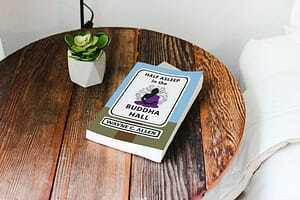
Looking for more on this topic? Check out my book, Half Asleep in the Buddha Hall.
 The 4 Descriptors, having a party…
The 4 Descriptors, having a party…Many of the Buddhist texts were translated into English in the late 1800s. “Life is Suffering,” for example, is the first of the 4 Descriptors, and is a translation that is apropos of the 1800s. The actual Pali word that is translated as “suffering,” dukkha, is really about the unsatisfactory nature of life. Dukkha is commonly used to describe a range of feeling, from unease to suffering.
Suffering was a big deal to theologians and philosophers 100 years or more ago. For us, not so much.It’s the same with “Noble” and “Truths.”
I certainly don’t use the word “noble” in my daily speech. A better translation is “important” or “preeminent.” And “truth” does not capture the essence of the Pali word sacca, which really means, “to be.” It refers to something that is “right there; is obvious.”
Thus, my shifting to 4 Descriptors of the Way Life Is. Once you see them, they are “right there,” and oh so obvious.For now, let’s look at the 4th descriptor, what is called the 8‑fold Path.
Each of the 8 items on the path is typically prefaced with “Right,” as in Right View, Right Vocation, etc. Instead, I’ll follow Glenn Wallis, as conveyed in the book, Basic Teachings of the Buddha. He notes the same language translation issues I’ve mentioned above, and says that “Right” has the contemporary meaning of “correct,” as in right and wrong.
He proposes using the word “sound,” as in “that which leads to the result we seek.” I agree. “Sound” it is!
The 8 items on the 8‑fold path can be put into three groups:Understanding – Sound View, Sound InclinationConduct – Sound Speech, Sound Action, Sound Livelihood, Sound EffortAttentiveness – Sound Awareness, Sound ConcentrationA look at understandingPeople operate out of a skewed view of how life is, and who they are. Our individual view is embedded into our sub-conscious minds through the normal “growing up and learning” process—something I call the ego development project.
This project is absolutely necessary—it is through this project that we self-identify, separate ourselves from “mother,” and develop a sense of “me / not me.”
It is the basic, first step in a lifetime of exploration – in a sense, it’s something that provides the convenience of our name/identity, but very little insight into “the way it is.”
Most people, however, stall right there, and spend the rest of their lives protecting and defending their ego identity, to the detriment of finding true contentment and an elegant way of being.
This is not their fault. It’s pretty hard to move past a socially acceptable place of being (especially as that artificial target keeps shifting,) to something entirely different. In a sense, without external intervention, or another point of reference, all we can expect is to be just like, or a little worse than, the social standard or norm.
Sound ViewWe could get into a long debate about what the alternative to the cultural norm is. I point to a perspective that is non-dual, self-responsible, and one in which I see myself as “that which is emerging from life (from is-ness) itself.” I have the choice to live in my head, lost in thought, finding myself dwelling in the past or the future. Or, I can come into moment-by-moment presence, recognizing that, by choosing to view life in this way, I have no permanent reality.
I am as I am, and then I become that which is, in the next moment.From this place of expansiveness, I can choose. I can engage, or I can step back. I can let go, or I can embrace. I can shut down, or open up. Nothing is right or wrong (the non dual part) and nothing is required, other than presence.
I choose to see my life as a series of comings and goings, with no permanence to attach to. Things are as they are, and then they are something else. Which is sort of how we live our nomadic lifestyle…
This process of letting go (of non clinging) is the key to the practice.Our egos desperately want us to be important, and tries to elevate everything we touch to “special, unique, and important.” Our egos are excessively invested in keeping the status quo, and remain a part of our ongoing experience until we die.
So, part of a sound view is tied up in how I see my ego.
I choose, then, to make peace with my ego, with my thoughts, with my emotions and feelings, and with my body. In other words, I do not ignore, sublimate, beat down, or disparage any of the “stuff” that accompanies being alive in a body. Nor do I elevate any of the stuff to the level of demigod. I am alive and having human experiences—and all of it is just as it should be.
The key to moving past an old view to a new one is gentle acceptance of what is, and who I am, while breathing into who I am becoming.
Sound InclinationInclination and view are paired. If our view is that “the world is unfair,” we will be inclined to be untrusting. If we view the world as “scary,” we will be inclined to be timid and reserved. If my view is that the movies I am running in my head are both “right and true,” my inclination will be to look for evidence that matches my invented film, and also to try to convince or manipulate others into accepting my view.
And on and on.
If our view shifts to “the way it is, is the way it is,” our inclination will be to treat the world with open-eyed wonder and curiosity. With this inclination, my eyes focus on what is before me. This includes thoughts which arise in me. I see “what is,” and I interact with it.
So, you might say that inclination is about intention, and interaction.
In other words, it’s not enough to say that you have a new view. It’s not enough to commit to following that view.
What is required is that final step of actually living in harmony and coordination with the view you espouse.
Most have difficulty here. I say to clients, “I don’t care what you say you will do, or what you say you understand. The only thing that matter is what you choose to do as you live your life.”
Facebook Twitter4 Descriptors of the Way Life Is
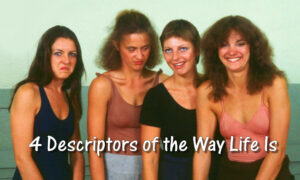 4 Descriptors of the Way Life Is–the Buddha’s age-old wisdom (the Four Noble Truths) is perfect for helping us see through the clouds of the last few years.
4 Descriptors of the Way Life Is–the Buddha’s age-old wisdom (the Four Noble Truths) is perfect for helping us see through the clouds of the last few years. Let’s have a look at the Buddha’s Four Noble Truths, which I prefer to call the 4 Descriptors of the Way Life Is.
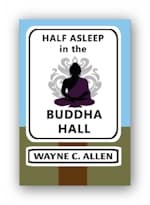
Looking for more on this topic? Check out my book, Half Asleep in the Buddha Hall.
 The 4 Descriptors, having a party…
The 4 Descriptors, having a party…Many of the Buddhist texts were translated into English in the late 1800s. “Life is Suffering,” for example, is the first of the 4 Descriptors, and is a translation that is apropos of the 1800s. The actual Pali word that is translated as “suffering,” dukkha, is really about the unsatisfactory nature of life. Dukkha is commonly used to describe a range of feeling, from unease to suffering.
Suffering was a big deal to theologians and philosophers 100 years or more ago. For us, not so much.It’s the same with “Noble” and “Truths.”
I certainly don’t use the word “noble” in my daily speech. A better translation is “important” or “preeminent.” And “truth” does not capture the essence of the Pali word sacca, which really means, “to be.” It refers to something that is “right there; is obvious.”
Thus, my shifting to 4 Descriptors of the Way Life Is. Once you see them, they are “right there,” and oh so obvious.For now, let’s look at the 4th descriptor, what is called the 8‑fold Path.
Each of the 8 items on the path is typically prefaced with “Right,” as in Right View, Right Vocation, etc. Instead, I’ll follow Glenn Wallis, as conveyed in the book, Basic Teachings of the Buddha. He notes the same language translation issues I’ve mentioned above, and says that “Right” has the contemporary meaning of “correct,” as in right and wrong.
He proposes using the word “sound,” as in “that which leads to the result we seek.” I agree. “Sound” it is!
The 8 items on the 8‑fold path can be put into three groups:Understanding – Sound View, Sound InclinationConduct – Sound Speech, Sound Action, Sound Livelihood, Sound EffortAttentiveness – Sound Awareness, Sound ConcentrationA look at understandingPeople operate out of a skewed view of how life is, and who they are. Our individual view is embedded into our sub-conscious minds through the normal “growing up and learning” process—something I call the ego development project.
This project is absolutely necessary—it is through this project that we self-identify, separate ourselves from “mother,” and develop a sense of “me / not me.”
It is the basic, first step in a lifetime of exploration – in a sense, it’s something that provides the convenience of our name/identity, but very little insight into “the way it is.”
Most people, however, stall right there, and spend the rest of their lives protecting and defending their ego identity, to the detriment of finding true contentment and an elegant way of being.
This is not their fault. It’s pretty hard to move past a socially acceptable place of being (especially as that artificial target keeps shifting,) to something entirely different. In a sense, without external intervention, or another point of reference, all we can expect is to be just like, or a little worse than, the social standard or norm.
Sound ViewWe could get into a long debate about what the alternative to the cultural norm is. I point to a perspective that is non-dual, self-responsible, and one in which I see myself as “that which is emerging from life (from is-ness) itself.” I have the choice to live in my head, lost in thought, finding myself dwelling in the past or the future. Or, I can come into moment-by-moment presence, recognizing that, by choosing to view life in this way, I have no permanent reality.
I am as I am, and then I become that which is, in the next moment.From this place of expansiveness, I can choose. I can engage, or I can step back. I can let go, or I can embrace. I can shut down, or open up. Nothing is right or wrong (the non dual part) and nothing is required, other than presence.
I choose to see my life as a series of comings and goings, with no permanence to attach to. Things are as they are, and then they are something else. Which is sort of how we live our nomadic lifestyle…
This process of letting go (of non clinging) is the key to the practice.Our egos desperately want us to be important, and tries to elevate everything we touch to “special, unique, and important.” Our egos are excessively invested in keeping the status quo, and remain a part of our ongoing experience until we die.
So, part of a sound view is tied up in how I see my ego.
I choose, then, to make peace with my ego, with my thoughts, with my emotions and feelings, and with my body. In other words, I do not ignore, sublimate, beat down, or disparage any of the “stuff” that accompanies being alive in a body. Nor do I elevate any of the stuff to the level of demigod. I am alive and having human experiences—and all of it is just as it should be.
The key to moving past an old view to a new one is gentle acceptance of what is, and who I am, while breathing into who I am becoming.
Sound InclinationInclination and view are paired. If our view is that “the world is unfair,” we will be inclined to be untrusting. If we view the world as “scary,” we will be inclined to be timid and reserved. If my view is that the movies I am running in my head are both “right and true,” my inclination will be to look for evidence that matches my invented film, and also to try to convince or manipulate others into accepting my view.
And on and on.
If our view shifts to “the way it is, is the way it is,” our inclination will be to treat the world with open-eyed wonder and curiosity. With this inclination, my eyes focus on what is before me. This includes thoughts which arise in me. I see “what is,” and I interact with it.
So, you might say that inclination is about intention, and interaction.
In other words, it’s not enough to say that you have a new view. It’s not enough to commit to following that view.
What is required is that final step of actually living in harmony and coordination with the view you espouse.
Most have difficulty here. I say to clients, “I don’t care what you say you will do, or what you say you understand. The only thing that matter is what you choose to do as you live your life.”
Facebook TwitterJune 6, 2022
Learning Flexibility
Learning flexibility — stop making excuses for continuing to do what doesn’t work — is an important part of living the wise life
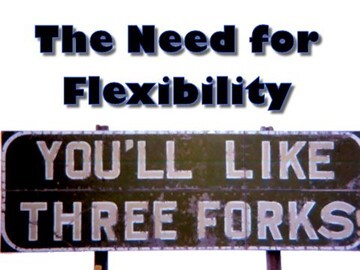
It’s sad that most people rigidly behave in ways that get them what they don’t want, and then blame others or the situation, rather than their behaviour, for the problem.
My first book was Stories From the Sea of Life. It came out back in 1994, and went out of print at the turn of the century. I still think the stories in it are good — I’ve turned it into a PDF and am giving it away as a bonus for subscribers to my Phoenix Centre Press website. (Link’s in the sidebar!)
I just re-read the old stories, which got me to thinking. One of the key principles for a rich and meaningful life is noticing the results of what you are doing.
Please! Notice the word notice!Because if you are just doing… doing because “That’s how I always do it!” … doing because you think doing it another way is hard… doing because your mommy told you to… doing because you’re proud, and never ask for advice about doing another way… you’re likely stuck.
Noticing the results of what you are doing is key.I have a young friend who says she wants a particular kind of guy. She’s even done part of a List of 50, so she kind of knows what she’s looking for.
She swears she will wait until “that guy” shows up. Then “the next guy in line” shows up, and she starts dating him… and bonking him. And then, he turns out to be a jerk.
I wonder aloud about this repeating pattern. She sighs, “You don’t get it. He asked me out! What’s wrong with men, anyway?”
I wonder what’s wrong with what she’s doing, and how she manages, repeatedly, to avoid taking any responsibility for her poor choices.
And from there, I thought about “Pete” from Iowa, and trout fishing in Montana.No, really.
Here’s a story from Stories From the Sea of Life:
Just to repeat: Back in 1994, My first book, Stories From the Sea of Life was published. It’s now out of print, BUT is available as a pdf file. If you’d like to read more of the stories contained therein, amble over to my book site, The Phoenix Centre Press. Once there, subscribe to the site’s mailing list, and you’ll get the pdf for FREE!
It’s Refreshing
Pete from Iowa was one of my Freshman room mates, in 1968, at good old Elmhurst College. He introduced me to the idea of meaningless and superficial refreshment.
The town Pete came from was so small that the chief entertainment for teens was to jump into their pickups and cruise around the block, which just about circled the town. Then they’d go over to the A & W, have a root beer and check out the girls. They wore an “outfit” — crew cut, black jeans, white or coloured tee-shirt with a pack of smokes rolled up in the sleeve… and cowboy boots.
Pete liked to feel refreshed. All the time. He told me that. Repeatedly. I thought that meant he showered a lot. Wrong.
I noticed that he had brought along to College what for me would have been a lifetime supply of the industrial size cans of Right Guard Aerosol Deodorant. Initially, I was glad that he was so conscientious, as it was a small room with no air conditioning, and I therefore considered deodorant to be a direct gift from God.
About a week into the Semester, I was lying abed studying, when in rushed Pete. “Boy oh boy, guy,” said Pete. “Shore is a hot ‘un out chere.” And he grabs a can of Right Guard, lifts his arm heavenward and sprays a goodly dose of the product on the appropriate area. One small problem, though. I noticed that he had neglected to remove his white tee-shirt.
Ever the kind soul, ever willing to illuminate this backwards kid from Iowa, I pointed out the error of his ways. To which he replied, “We always do it that way back home. Cools ya right off.” I think it was then and there that I began to hate the expression, “We always did it that way.”
This little trip to the aerosol can took place not once a day, but every time Pete left the room. I began to wonder how he was able to raise the arm of his shirt, so heavily laden was it with Right Guard. Right Guard ceased to be my product of choice, from that day on.
Refreshment (becoming fresh and alive again) has more to do with a state of mind than it does with taking a day off. It is an attitude, not a technique. It can’t be bought and applied. It must be lived. It is an internal choice, and thus is not about vacations, relaxation, exercise or eating right. It is about a change of heart and a change of mind.
End of the first story.
One lesson I learned was to slow down on offering unsolicited advice.But I also realize, now, that Pete’s, “We always do it that way back home. Cools ya right off” thing is no different from my young friend getting lousy dating results, and yet endlessly repeating her pattern.
The defense, “That’s how WE do it” is a way of deflecting responsibility for results. It’s focus is on “them” or “the past.” It’s a belief that self-responsibilty only applies to things that go well. Everything else is cause by others. And poor, poor me.
I believe that the only place your attention ought to be is on you and your behaviour.Example: if your kids act up, your job is to provide clarity, or punishment, or whatever. First, monitor HOW you react. Do you yell? Say inappropriate things? Roll over and give in?
Then, monitor your results.The thing you can always do something about is what you do. You pay attention both to the results of your behaviour, and the behaviour itself. Rather than say, “That’s what I always do,” you make another choice.
Here’s another story, about changing what you are doing to get better results.Back in the late 70s, my parents retired to Three Forks, Montana. Dad had family there. I briefly thought about moving there too, but didn’t.
Three Forks, as everyone knows (he says with a grin), is “The headwaters of the Missouri,” where the “Gallatin, Jefferson, and Madison Rivers converge to form the mighty Missouri.” Thus, three forks. Get it?
It has nothing at all to do with eating.
I make jokes about Three Forks, (more bars than banks…) but let me tell you, those rivers contain a pile of trout. And my uncle Barney was one hell of a trout fisher… person.
Historical notes:The movie “A River Runs Through It” was filmed in the area.In the 70s, when they moved the Fly Fisher-persons Hall of Fame (or whatever it’s called) to the region, President Jimmy Carter (a prodigious fly-fisher) came in to dedicate it. My Uncle Barney was one of his guides for a fishing trip!!!No rabbits attacked President Carter during this trip. (Get it???)
Anyway, in the late 70s I headed to Three Forks for a vacation. Uncle Barney said he didn’t have enough time to teach me to use a fly rod, so he and my cousin Mike taught me to fish using a spin casting rod… with a fly attached. I got OK at it.
One day, dad and I headed out at 6 pm to catch some fish. (I think we were on the Gallatin, but maybe not, as there are three other choices.) We stood on the banks, picked out a fly or two, threaded ’em on, and proceeded to catch water for an hour.
“Nary a bite,” as they would say in Three Forks, and elsewhere.Next day, I was dejectedly wandering the street of Three Forks (I jest. Three Forks has more than one street.) I found a fly-tying shop. I decided to head in and look around.
The nice (and by nice, I mean really cute) lady behind the counter asked if she could help me. Being sharp as a pencil, I assumed she meant help me with things related to fishin’, so we began a dialogue.
I told her where dad and I had been the evening before. I griped that I’d used my favourite fly, and then my second most favourite fly, and that “I’d been skunked.” (I pick up local dialects well…)
She shook her head, and sighed, then asked me “Whatcha’ usin’?”

Sidebar: People dress like cow-persons in Montana, and I was doing my best to look the part. I was dressed in (hiking) boots, jeans, a cowboy shirt, neck scarf, and a wide brimmed cowboy hat, which I had bought on my first trip to Montana. See photo.
I took off my hat and extracted the flies I’d used the night before from where I’d embedded them in the hatband. She laughed. (Not because I had ’em in my hatband. That’s, after all, where you “chuck ’em.” And THAT also has nothing to do with my dad, who was also Chuck…)
“No wonder you didn’t catch anything,” quoth she.
“Huh?” I replied. “They always worked before.” (This is a variation of, “We Always Do It That Way.”)
She reached into her display case, yanked out a big plastic box, grabbed a tray from the box, opened a storage container and tossed 4 flies on the counter.
“Use these. You gotta match the hatch.”
“Huh?” I replied. Me. Always articulate.
“There’s Mayflies (or something) hatching right now. The trout ain’t gonna bite on nothin’ else.”
I figured she was spinnin’ a tale… tryin’ to rip off the bozo from back East… but I really wanted to catch me some fish. Besides, have I mentioned that she was both cute and wearing really short shorts?
I risked, “So, how much for the flies?”
“Two bucks, for the four.”
Sheepishly, I plunked down a “fiver,” and got my change. I didn’t need a bag—My hatband had plenty of room.
That evening dad and I went back (Fish story alert! Fish story alert!) to the exact same spot! We tied on the new flies! One hour later(!) we’d caught and released 20 or so large trout! We also kept 6 for breakfast! The only reason we quit was that our arms were tired from reelin’ ’em in!!!
“You gotta match the hatch, ’cause the trout ain’t gonna bite on nothin’ else.”Now, admittedly, if I’d have waited a month or two, maybe the flies I’d started out with might have caught me some fish. But that’s dumb. Changing flies at the time of the failure—and changing them again and again as necessary, is the secret to consistently catching fish in the right here, right now.
It doesn’t matter what used to work, or what might work, some day, if the creek don’t rise. All that matters, to repeat, is what works right now.If it ain’t working, doing more of it ain’t gonna work either.If you’re yammerin’ on about somethin’, and no one including the fish are biting, maybe you need to let the thing go.If you’re ignoring something and hoping it will go away, and it isn’t, maybe you oughta deal with it.If you find yourself saying, “It always turns out like that,” maybe you need to try another fly.Facebook TwitterMay 1, 2022
3 Riffs on Relating
 3 riffs on relating — ideas and concepts about exploring the depth of intimacy
3 riffs on relating — ideas and concepts about exploring the depth of intimacyThe greatest error in relationship-building comes from the idea that your partner can “make you whole,” or will “make you happy.” Here are 3 riffs on relating!

Want to learn more about living a full and meaningful life?
Want to have the best relationship ever?
Check out my books
Riff the First — The black hole
I look at my core, the center of my being. I push deep down with my fist to find a calmness I can take outside myself and spread on my arms and legs and face. But when I get there, it’s like an earthquake. There is no calm center, no big teddy bear at the core of my soul. It’s all fragmented and shattered and quaking. And as soon as I recognize it, I give it permission to come out and shake the rest of me. And it does.
Kelly Stern, THESE ARE MY BONES, Dissertation, The Graduate Faculty of The University of Southwestern Louisiana, 1997

A friend said, “I just realized that, for all of my life, I’ve been looking for someone to fill up this black hole I feel inside. I now know that no one can do that for me.” I hastened to add that he couldn’t do it for himself, either. The black hole is real, always present, and its feeling is anxiety.
Its source is our fear of non-being – our fear of death.We need to understand that all of us are anxious, all of us feel the black hole, and most of us have been conditioned to either deny the feeling, or blame it on external circumstances. Many of us have forged relationships for exactly the reason he states – to have someone else in our lives to make it all better.”
Our death fear blinds us the the truth that no one, including ourselves, can fill in the black hole. There is no certainty to life, beyond the final one – death.
“Life, as a purposeless drift, is a series of accommodations an organism makes as it moves through a medium. By definition, every accommodation is successful, except the last.”
Language Structure & Change , pg. 47)
So, we can sit down and feel sorry for ourselves, or we can get up and engage with the present moment. Right now–is Now.
Riff the Second — shining light into the hole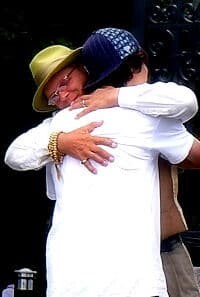
I spent a lot of time encouraging my clients to go out and have a conversation with someone they find interesting. I’d invite them to make contact — eye to eye and knee to knee. I’d ask them to go and listen to someone else; to find out what another person thinks life is all about. They didn’t have to buy into what the other person was saying, or change in any way.
I wanted them to learn to reach out, to listen and to share.
Why? Because life is a purposeless drift – but not a meaningless one.In the context of life and living, purpose implies following a “path of purpose” imposed from the outside. Meaning describes the explanation I give to my life.
Meaning is personal.I loved working with couples, many years married, who finally talked to each other from their depths, intimately, softly, with care and compassion. And almost universally, one or the other looked at the other with wonder and exclaimed, “Oh my God, you mean you’re scared too? I thought it was just me!”
Riff the third—Meaning becomes meaning-full through intimacy.As I inter-act with Darbella, I remember that she has been listening to “me do me” since 1982. When I come up with some new version of me, which may be so overwhelmingly interesting to me that I just swallow it whole, Dar can offer the perspective of long association, and ask me to come off of my cloud and test what I’m saying.
And I can do the same for her.
This is NOT about Dar making me whole. It’s not about finding someone to complete me. No one can. But me.
Relationship, for me, is a place where I feel free to share who I am. My goal is to learn about me, accept, joyfully, my being in the face of my non-being, and to share myself with at least one other person, deeply and intimately. And then to sit back and watch and listen to Darbella doing the same with me.
With intimacy, anything is possible. We have the chance to trust, to open, to be vulnerable, and especially, to explore our own darkness, in the presence of someone who is curious and chooses to acts as a mirror.
In the depth of our darkness we reach out and enter into a dialogue. And in that reaching out and making contact – in the touch – there is light.
Facebook TwitterApril 11, 2022
Ask yourself, “What can I do, in this moment, to bring peace to this situation?”
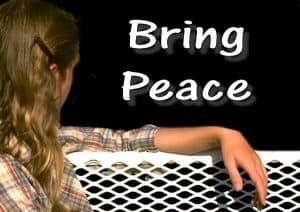
Bring peace‑a way to find yourself in a grounded and whole manner. It means giving up being right, among other things.

Want to learn more about living a full and meaningful life?
Want to have the best relationship ever?
Check out my books
Back in 1986, Darbella and I went on the archetypical European Holiday. We ended up spending a good deal of time in Scotland, touring about, losing golf balls on difficult courses, and visiting famous sites.
One of the more interesting side trips was up to the north of Scotland, to the Findhorn Community. Odd place. You drive along one road, and there is a railroad crossing. The arms came down, we stopped, and we were amazed to see a Harrier jet cross in front of us. Seems the Royal Air Force has a base up there, and the landing path crosses the road. Glad we stopped.
Findhorn was one of those 60s places where a bunch of hippies settled, and in their words, communed with the earth spirits. Soon, their gardens overflowed with huge cabbages and other crops, this on land that was mostly sand. They’ve been teaching courses and holding retreats ever since.
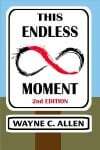
My first and most popular book, This Endless Moment. Learn to live a full and satisfying life.
A Course in Miracles and a New ApproachNone, of this really has any relevance to our topic, other than that the title of this piece is a paraphrase of one of the key points in a book, A Course in Miracles (ACIM). I found the book in the Findhorn Bookstore. Thus, Findhorn really has nothing to do with the rest of the story, other than to provide a good intro.
Anyway, I would have to say that ACIM was the book that first opened my eyes to another way of looking at what we call reality. Supposedly channeled to an atheist from Christ, the book presents a view of how the world works that became the basis for many of my later understandings.
Nothing in the rather large book is radically new, and there are some points I disagree with. (For example, the book states that if one thinks something is evil, one simply misunderstands the situation. The book has nothing to say regarding the Holocaust, which, it seems to me, was not a misunderstanding, but rather evil incarnate.)
I’ve never been one to throw the baby out with the bath water, and I found that ¾ of the book made perfect sense.ACIM makes it clear that all emotional distress is self-created, as opposed to other-created.
You might say that the message is: “if you don’t like the way something is, change your view of the situation.”
Which pretty much matches our understanding of things. To go back to the Holocaust, we see this principle in operation. The situation was horrific, and yet Victor Frankl wrote Man’s Search for Meaning in Auschwitz. He thus took a universally horrible situation and (forgive the pun) made it meaningful. The situation does not ever dictate the result for the individual confronting it. Anything can come from anything.
The Goal of Bringing PeaceSimilarly, our present idea (taken from ACIM) is that there is always the opportunity to bring peace to any situation. Situations are as they are, at what might be described as the objective, or ‘data’ level. What is happening is what is happening. The place where things go ‘south’ as at the subjective level of interpretation.
Of course, we want to believe that events have intrinsic meanings–that these meanings are obvious–and that the meaning I ascribe to a situation is also the ‘true meaning.’ We get right indignant when others disagree with us as to this subjective meaning.
All of us have been caught up in the drama of trying to get others to change their minds and/or their meanings. We get so caught up in defensiveness and argument that we forget that the subjective is, by definition, also the personal.
How I view my reality is solely and completely a result of my upbringing, experiences, and history. The only authentic question is—is the way I am interpreting my reality helping or hurting me? If my interpretation is hurt-filled, I can continue to try to force the world to see it my way, or I can bring peace.
Bringing peace is not giving up, surrendering, admitting fault, or wimping out. Let me toss out a few names: Gandhi, Martin Luther King, Mother Theresa. Not exactly wimps. People with strong opinions, goals, aims. Yet, their method was similar. Into extraordinarily difficult situations, they brought peace. Not compromise. Just a firm conviction that one could be peaceful while at the same time changing the course of history.
Our personal lives are precisely as torment-filled as we torment ourselves.In Steven King’s Lisey’s Story, a character says something like: “90% of the things people think about are none of their smucking business.” The point is that we spend inordinate time in our heads making trouble for ourselves over things we can either do nothing about, or which are not our business in the first place.
Peace, on the other hand, begins with allowing situations to be situations, and allowing others to hold their beliefs without the demand that they change.
Rather, I simply engage in what I can control—my interpretations, and especially my actions.It does me no good to demand that others communicate elegantly and truthfully. All I can do is to communicate elegantly and truthfully. It does me no good to preach non-violence, and then yell at others, or, heaven forbid, use physical force unnecessarily.
I remember once walking through a mall. A mother was shaking her eight-year-old, screaming at him, “How many times have I told you not to yell at and hit your sister?” I can’t for the life of me, figure out where he learned to do that…
Excuses, Excuses…Many are the excuses.
“I was abused as a child.”
“I speak directly and honestly. I only lose it when he’s being a jerk.”
“My dad had a bad temper.”
“I can’t let people walk all over me.”
Instead of excuses, bring peace. Speak clearly and act in a disciplined way. Tell your truth without demanding that others agree with you. Act so that your words match with your actions, and move forward so that you sense your own integrity.
This is not backing down. This is claiming your story, your truth, and your path as your own, and simply and peacefully walking it.
Notice how you block yourself from walking your own peaceful, impactful path—by blaming, fighting, demanding. Open yourself to the possibility of living your life free of the need to force others, manipulate others, or seek the permission of others. Find and walk your path, in peace and with integrity. In the end, it is all any of us can do.
Facebook TwitterMarch 4, 2022
Great Faith. Great Doubt. Great Effort.
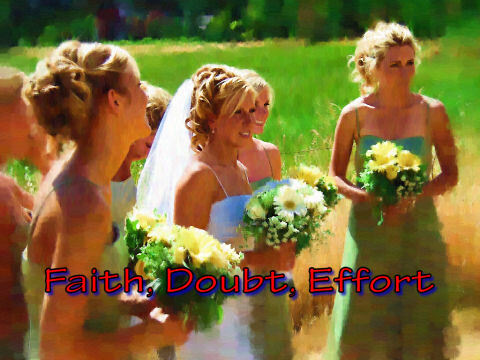 The bridesmaids of
The bridesmaids of an Enlightened Life

Want to learn more about living a full and meaningful life?
Want to have the best relationship ever?
Check out my books
Great Faith. Great Doubt. Great Effort.There’s this thing we could call the leap of faith, which lies directly between convention and fully living. Like many things, there’s a orderly (or not so orderly) progression.
Here’s how it goes.Most people enter adulthood as fundamentalists — by that, I mean that they mindlessly follow the rules and regulations of their tribe, culture, and family.
They have a burning desire to fit in, so as not to ruffle feathers, or be seen as an outsider. Thus, everything is about doing things “the right way,” even though such thinking leads to semiautomatic, unreflective being.
Society wants us to behave “correctly” in all areas, such as:
relationship/marriage, child rearing, employment, political/socio/religious actions and perspectives. I’ll do whatever you say!
I’ll do whatever you say!People believe that such fundamental things as how we relate, how we do “what, and with which, and to whom,” what career to follow — in short, who we are and how we think, is graven in stone.
We fear the supposed ostracization that we imagine will result from disobedience.
And certainly, given the last 100 years and genocides, there’s no question that appearing different can lead to extermination.
Possible, yet not likely, for the majority of us.Yet, many sit in the middle of a great pile of reeking dissatisfaction, and spray room freshener so as not to notice the stench.
The way out is a path, one we describe again and again, in different ways.
Really, it begins with a commitment to an article of faith — or, Great Faith.Faith is described as “conviction about something unseen, or not currently present.” Without an underlying faith–without believing that it is possible to engage with life differently, despite never having tried it–we are doomed to “pile sitting.”
Faith is choosing to look closely at the rules you operate under, to look closely at how you are and who you are, and to grasp the possibility that, if I change my actions, I may get different results.
This seems so obvious as to be not worth stating, but here is the “thing” that keeps most people stuck.
We become heavily invested in the maintaining the status quo, and in supporting our culture’s norms, while remaining fixed in blaming others for our issues. This external focus means that, for the majority, self examination is threatening, and without an iron-clad guarantee of success, they’d rather just sit there, thank you very much.
But lets just say that you are sick and tired of your little pile, and decide that you have faith that shifting to another way of being is possible. With effort, but possible.
How do you move from fundamentalism?
Great Doubt.The Buddha said,
Believe nothing, no matter where you read it, or who said it, no matter if I have said it, unless it agrees with your own reason and your own common sense.
And,
Here’s the key.Do not believe in anything simply because you have heard it. Do not believe in anything simply because it is spoken and rumored by many. Do not believe in anything simply because it is found written in your religious books. Do not believe in anything merely on the authority of your teachers and elders. Do not believe in traditions because they have been handed down for many generations. But after observation and analysis, when you find that anything agrees with reason and is conducive to the good and benefit of one and all, then accept it and live up to it.
Initially, there are 2 things to question. First and foremost, you must question everything you have learned from your society / parents. Secondly, question your willingness to stay stuck, doing the same thing.
Everything, each principle, must be tested. Note that the Buddha provides two arenas for testing.
1) reason and common sense, and
2) observation and analysis.
Reason and Common Sense—Our exploration, or Great Doubt must begin with a rigorous self and rule analysis. “If I think this way, I act this way. If I act this way, I get this result. Do I want this result? No! OK, then I must change both what I think and how I act, or at the very least, how I act.”
Reason and common sense dictate that what I say I want, what I do, and what I get should match. Thus, if I say I want good communication, and I fail to communicate, and then I blame my partner, all of this might well fit our culture’s habit of blaming “the other,” while sitting on our pile.
But if I exercise Great Doubt, I might notice that the part I have control over — whether I communicate — is right there, for me to do something about. But only if I exercise my doubt by getting rid of the “blame others” rule, AND then do something different!
Observation and analysis—I can’t actually observe “just thinking about” something. I can only observe something physical. (Imagining a pizza is not the same thing as observing a real one.)
I may have all kinds of fears about what changing a behaviour will lead to, (like the old joke, “Why don’t Baptists have sex standing up? Answer: “It might lead to dancing.”) but I won’t know what actually happens unless I do something different. This is what the Buddha meant by not simply buying into new ideas. Rather, it was, “Try it out. If it doesn’t work, then drop it. But if it DOES work, you know what you must do!”
We use Great Faith in the process we choose to live by, and Great Faith in people we trust who seem to be living as we would choose to, as the catalyst to begin challenging what we believe. Great Faith dances with Great Doubt.
Great Effort is demonstrated in behaviour (obviously!)— and this is the leap of faith.Don’t you just love circles?
The reason it’s a leap of faith is that you are by definition required to exert effort doing something new — completely new — with no assurance that you’ll like the result. You do it because you KNOW you hate what you are getting, and hate sitting in your pile. But moving through Doubt to Effort requires actually doing something, and that’s scary.
So, here are three observations:
Assuming that a leap of faith is across the chasm between uncertainty and stability, it is best
1) to leap unburdened by a backpack,
2) to not attempt to make the leap in two jumps.
3) to not straddle the gap.
Leap Unburdened Baggage? What Baggage?????
Baggage? What Baggage?????You can’t take anything with you — not your stories, not your friends, relatives, partners.
They can also choose to leap, but leaping is a solo event.
Many want to bring their victim stories along, simply out of attachment to them. “My mom never loved me.” “My dad abused me.” “Everyone betrays me.”
These things are the waste products of your former confusion, and have no place “on the other side,” where the rules are different. You really must drop all your stories.
There is effort enough required to leap — bringing along a life time of stories means a nose dive into the void.
Leap Can I try that again?
Can I try that again?There is no half way attempt.
Many are the people who want to try a bit, have a rest, take a week or month or year off, an then try a little more. They diddle, divert, and play at change.
The gap is there, and it’s real.
You can’t walk across, or go across in stages. A leap of faith, Great Effort, is a leap, singular. You back up, run like hell, and leap. You engage fully, no excuses, nothing held back.
You open every cell of your being, open every part of you, and fling yourself heedlessly into the gap. Leap, and you will land unscathed on the other side. Dick around, fiddle around, dawdle, and it’s nose dive into the void time.
Un-straddle Yourself “Just hanging around. You?”
“Just hanging around. You?”And then there are those who want it all. One woman I knew, a therapist, wanted me to train her to do bodywork. I said, “Well, why don’t you have several sessions first, and see first hand what it’s about.” She said, “You mean me? I don’t want to do it, I just want to learn it! ”
This leap means leaving everything behind, including what you pretend you know.
You must trust (have faith in) your path, unburden your back, and let everything go. If you attempt to straddle the gap, keeping hold to, say, a dysfunction relationship while engaging in another one, you are going to get pulled in half, (or end up doing a nose dive…)
The leap of faith is just that… a leap. You typically land on the other side, in a heap, alone and unburdened. The territory is new and strange, and you are unsure and panicky. What to do, what to do?
Look around. Likely a guide is right there, ready and willing to give you some direction and a sense of what works “over here.” And a gentle touch to heal your rawness, and a word of encouragement, and a kick in the ass. Because now the living and the walking start in earnest. Into a world where you question everything, trust yourself, and act like you’re whole, open, vulnerable and complete.
Because you are. Even if you don’t quite believe it.
Leap, and you will.
Facebook TwitterFebruary 15, 2022
Honesty in Communication
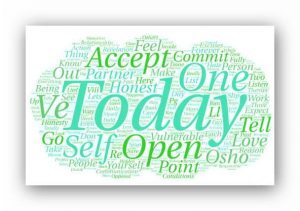
This is post 3 of 5 in the series “Commitment in Relationships”
Honesty in Communication — this is definitely a self-help project, as all you can do, even in relationship, is work on yourself.Of Wayne’s many books, the one closest to today’s topic is: The. Best. Relationship. Ever.
Here’s the list we’re working on:• I can only commit to an action — to something I will do.
• I commit to being in relationship with you. Here is what I commit to:
• I will be open, honest and vulnerable in my daily communication with you.
• I will tell you, today, who I am and what I am thinking.
• I will tell you, today, everything I have done, and what it meant to me.
• I will listen to you with curiosity and interest, today.
• I will accept that you are who you are today, and will integrate who you are today with my picture of you from “yesterday.”
• I will make myself fully available and present to and with you, today, and engage in clear and concise communication with you for not less than 30 minutes, today.
• I will own all of my thoughts, feelings, emotions and interpretations, working to take full responsibility for each and every one of them. If I slip and go into blaming, I will stop myself, apologise, and return to self-responsibility.
• I will actively encourage you to listen to me and to actively hold me to the performance of what I have committed to.
• I will commit to all of these things, without any expectation of anything from you, as all I can ever commit to is to what I can and will do.
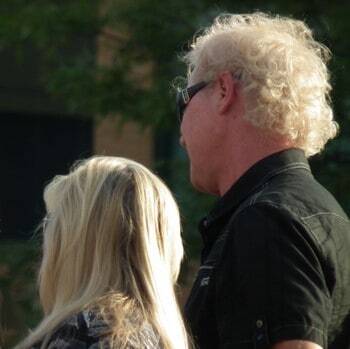 An honest discussion,
An honest discussion, a heartfelt sense of “being with.”
The only way to build and maintain an excellent relationship is through the rigorous implementation of useful actions. To repeat the obvious, the key to successful anything is action as opposed to talk.
This week’s three points are absolute, as opposed to conditional.In the past I’ve mentioned how much Darbella and I have learned from our study of OSHO, the Indian guru “formerly know as Bhagwan Rajneesh.”
In his book Intimacy, OSHO makes the case for self revelation:
“Unless you drop all your repressions and inhibitions—which are the gifts of your religions, your cultures, your societies, your parents, your education—you will never be able to be intimate with someone. You will have to take the initiative.” pg viii
“You have to accept yourself in your totality. If you cannot accept yourself in your totality, how can you expect somebody else to accept you? ” pg viii
OSHO said that it is “normal” for someone to hate an aspect (or several) of themselves, and then expect their partner to “accept them as they are,” or “fix them.” This is weird — such people believe that love is all about the other person behaving as they want them to.
OSHO wondered why anyone would accept you, if you don’t accept you.One answer to this question is that one’s partner also hates him or herself, so there’s a meeting of two dysfunctional people; this is the meaning of the adage, “Misery loves company.”
Because many marry or get together out of a need to be unconditionally accepted, each person expects the other person to “make it all better.” This is a sure recipe for disaster.
Before we dig in, let me also note that, in the latter two points for the day, I have included the word “today.” It’s there for a reason.Often, people in love say the strangest things, like “I’ll love you forever! I’ll always be there for you! I love everything about you.” This is the height of dumb, as all we ever have is… you guessed it… today.
Love makes us stupid, and so does day-to-day living. Given our greatest fears — death and change — we seem almost compelled to hold on to what is happening by claiming it will go on forever. Then, when forever ends, (as it always does) the accusations of “You lied to me!” come to the fore.
Lets get back to our pointsToday’s three points are all the same. Each requires the speaker to be open, honest, and revealing. There can be no hidden material, no hidden agendas. This requires great discipline.
OSHO wrote about the origins of our resistance to self-revelation.It’s pretty simple. We hate whole aspects of our selves. We feel our emotions directly, yet fear their expression. We create movies in our heads, and thank god no one else can see the things we say and do in there. We are sure that if our partner ever knew what went on inside of us, they’d run for the door.
And we assume that we are the only one like this. We pray that no one catches us out, and hope that, if we slip, our partner will cut us slack.Then, our partner lets one of their cats out of the bag, and we pounce. “You lied to me! You disappointed me! You’ve been lying to me!” We conveniently forget all of the crap we’ve been stuffing, and turn the whole thing inside out, judging “the other” our partner has become.
Forever, we have been suggesting the alternative — self-responsible self-revelation. The suggestions above are the beginning of true intimacy.It’s a simple as, “If I have nothing to hide, there is nothing hidden.”
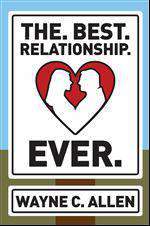
Note: And if your present relationship needs work, well… check out The. Best. Relationship. Ever. It’s my relationships book… you’ll find all the help you need!
Now, admittedly, this flies in the face of every bit of cultural conditioning we’ve received.
We’ve been trained to blame and minimise — to give the “proper excuses.” “I am so angry, and it’s his fault.” Or, “I am really sad, and you would be too if all of this had happened to you.” Or, “Here are all the reasons I can’t stop criticizing.”
Therapy and Bodywork are two experiences that lend themselves to the practice of being open, honest and vulnerable — it’s kind of the point. Excuses for a feeling are not required. In fact any therapist worth their salt will tell you to park the reasons and get to the feelings, as the reasons are just stories you’ve made up after the fact to justify what you are feeling.
I’d love to tell you that most of the people I saw for therapy were fully open in their self-disclosure, but that would be untrue. The conditioning to lie to oneself and to others runs deep. The excuses and explanations are often all the person knows. That is the point of therapy — to get past the superficial part to what’s really going on.
Trust, interestingly, is not created by being in a relationship. Trust is a personal trait or perspective.What I mean is that I do not create the conditions for the person I’m with to feel safe enough to speak. If this were the case, others could only speak their truth when the people around them were behaving perfectly.
No, as OSHO says, this project is totally about one’s willingness to open up and say what’s going on, because that’s the only way to get anywhere. In this process of saying, of revealing, one learns to respect and forgive and (horrors!) even like oneself.
Revelation and acceptance is an inside job.Be aware, this week, of how many times you keep yourself from being fully open and revealing with your therapist, your partner, yourself. Listen and see if you’re presenting excuses and justifications as opposed to open, honest, vulnerable communication. Then, see what happens as you begin to self-disclose.
And remember, you may just discover that some of the people you’ve had around you for a while really don’t want to know you, don’t want honesty, because they are afraid of letting their stuff out. Better to know this and either go for therapy or find a new partner. (Or both.)
Life is short, and taking your time with this work is plainly dumb. Make a commitment to be honest with yourself, open and vulnerable and honest with others. And commit to moving away from relationships where openness, honesty, and vulnerability is not encouraged.
You do not have forever. So, start.
Facebook TwitterFebruary 6, 2022
What Commitment Looks Like
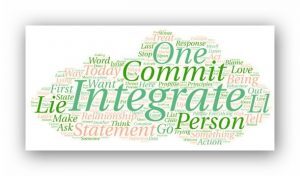
What Commitment Looks Like — we continue our look at the actions necessary for a relationship to thrive

Note: And if your present relationship needs work, well… check out The. Best. Relationship. Ever. It’s my relationships book… you’ll find all the help you need!
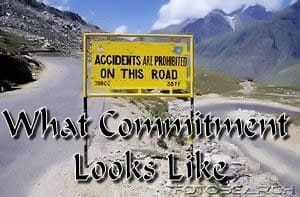 Last article, I proposed a “commitment list” — things that make for an excellent relationship:
Last article, I proposed a “commitment list” — things that make for an excellent relationship:• I can only commit to an action — to something I will do.
• I commit to being in relationship with you. Here is what I commit to:
• I will be open, honest and vulnerable in my daily communication with you.
• I will tell you, today, who I am and what I am thinking.
• I will tell you, today, everything I have done, and what it meant to me.
• I will listen to you with curiosity and interest, today.
• I will accept that you are who you are today, and will integrate who you are today with my picture of you from “yesterday.”
• I will make myself fully available and present to and with you, today, and engage in clear and concise communication with you for not less than 30 minutes, today.
• I will own all of my thoughts, feelings, emotions and interpretations, working to take full responsibility for each and every one of them. If I slip and go into blaming, I will stop myself, apologise, and return to self-responsibility.
• I will actively encourage you to listen to me and to actively hold me to the performance of what I have committed to.
• I will commit to all of these things, without any expectation of anything from you, as all I can ever commit to is to what I can and will do.
I drew portions of what I wrote from my excellent relationship book, The. Best. Relationship. Ever. I decided to expand a bit on the items on the list, above.
Let’s begin by talking about one of my favourite words – integrity.
Integrity (noun)
Definitions:
1. possession of firm principles: the quality of possessing and steadfastly adhering to high moral principles or professional standards
2. completeness: the state of being complete or undivided
3. wholeness: the state of being sound or undamaged
from: Encarta
Reading the first definition is an exercise in futility; we must ask: what are high moral principles? The answer depends upon whom you ask. So when I describe integrity, I provide an example.
“Integrity, for me, is demonstrated by how I act.
For example, “My word is my bond” is one of my integrity statements.
As a statement, it means nothing. It just sounds good.
The proof is this: I say I will do something, and then I do it, without excuse or equivocation.
Now, notice I did not say that my integrity is dependent upon the behaviour of others. My integrity is a characteristic of me and my behaviour, and only that.
So, how does this fit in with the list I proposed? I hope it’s obvious. Here’s the first statement:I can only commit to an action — to something I will do.
Many are notorious for trying to escape responsibility for their actions and the results they get from those actions. Our culture teaches us to blame others when things go wrong — for example, blaming the teacher for your kid’s bad grades.
And most people are unwilling to make anything other than conditional commitments. “I’ll do this if you will do that, and you get to go first, of course.”
Where this goes off the rails is when I think that I “should” be able to demand what another person is permitted to do in relation to me. It’s as if I think that my opinion ought to dictate another’s behaviour. This is faulty logic.
It’s a variation on an old theme – “If you love me, you’ll behave the way I want you to, so that I don’t make myself miserable or have to work at this.”When such statements are made, they demonstrate nothing more than a complete lack of integrity.
You are never going to meet one person who will do everything you want them to, act exactly the way you want them to, or treat you exactly as you want to be treated. On the other hand, what you can have, all the time, is a life of integrity: where the way you act matches what you say you will do.
You’ll notice that all the principles at the top of this article are statements of what “I” will do.My level of integrity is solely determined by how and whether I live up to what I have committed to.
This is not the same as being judged for not living up to something someone else wants me to do. I am not obligated to do something just because someone wants me to. I am obligated if I agree. It’s just that simple.
So, I hear you asking, what do I do when someone promises me something and then fails to deliver? This is a good question!I plan for such eventualities by having stated what I will do if there is an “agreement failure.” In other words, in my, case, my response would be to simply point out the “agreement failure,” and then to ask the other person to enter into dialogue.
Let’s propose a statement that has integrity: “I will always tell you the truth about me. This is so important to me that if you lie to me, I will leave.”
This is diametrically the opposite of, “If you love me, you will not lie to me,” or “I’ll stop lying when you stop lying,” or “Don’t you know you shouldn’t lie.”
Some people would argue that the example statement, above, is a threat. It is not. It is a statement of:
what I will do about telling the truth, andwhat I will do if you lie to me.The second statement is not about “you” at all. You can do whatever you want to (about, in this case, lying) and I am clear with you what I will do if you lie to me.
In other words, lying has consequences.This is different from erroneous boundary setting, which typically is a variant of, “You are not allowed to lie to me,” or, “If you love me you won’t lie to me,” or, “You can’t treat me that way.” Anyone can treat you any way they choose to treat you. Your choice is always limited to what you will or will not do in response.
Most people wimp out right here. I hear a lot of, “You do that again and I’m leaving,” and then, “whatever” happens again, and the person does not leave. This is a monumental lack of integrity on the part of the “threatener.” Threats are stupid and childish. If I say I will do something, I do it. This is not a threat. It’s a consequence.
I do what I say I will do. No excuses. No wiggling out of it. No trying desperately to make it the fault of the other person.
This is Integrity.Get this: a loving relationship is not one in which another person does what you want them to on command, is not one in which the other person puts you first, is not one in which everything is a contest and everyone is keeping score.
A loving relationship is one where mutual respect and honesty is played out in integrity and forthrightness. No games, no manipulation, no trying to force the other person into a mold of your making.
You are either in the relationship wholeheartedly and unreservedly, or you are gone. No half-hearted, conditional commitments.
Being an adult (and there are so few of them) means being a person of integrity. Plain and simple.
Facebook TwitterJanuary 26, 2022
Creating and Maintaining Relationships that Work
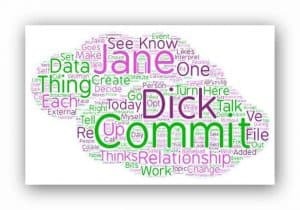
Creating and Maintaining Relationships that Work — relationships that work don’t just happen. You have to commit to making them work.
It’s amazing how often, when we’re talking with other couples, the conversation turns to relationships and relating. As you likely know, I’ve written a couple of books about this topic. (see: The. Best. Relationship. Ever.)
Just the other day I was talking about commitment.
I said,“In successful relationships, people do not commit to each other.They commit to a way of being and relating.”
Or,
“We commit to a verb, not a noun.”
I did a Thesaurus.com search on “commit.” Here’s one section:
Synonyms: accept, adopt, appoint, call for, cast, co-opt, commit oneself, crave, cull, decide on, designate, desire, determine, discriminate between, draw lots, elect, embrace, espouse, excerpt, extract, fancy, favor, finger, fix on, glean, judge, love, make choice, make decision, name, opt for, predestine, prefer, see fit, separate, set aside, settle upon, sift out, single out, slot, sort, tab, tag, take, take up, tap, want, weigh, will, winnow, wish, wish for
Antonyms: decline, forgo, refuse, reject, spurn
Source: Roget’s New Millennium
Thesaurus, First Edition (v 1.1.1) Copyright © 2005 by Lexico Publishing Group, LLC. All rights reserved.
To commit, then, is to opt-in; to select something. Now, you may be saying, “Yeah. And I chose him or her as my life-partner. What’s wrong with that?” And I would reply, “Nothing, other than that it won’t work.”
This is a normal mis-perception. It’s one of many inside / outside confusions. The only thing I can know is myself, and even that task is never perfectly accomplished.
I can commit, then, only to what I am in direct control of. In other words, I can only commit to what I will do.Misunderstanding what I can control and what I cannot is what gets us into trouble. Whenever I commit to an external anything, I make a fundamental mistake. The mistake is this: I am actually committing to my present view of the thing I am committing to, which means I am in deep trouble when that external thing changes.
And change it will. I can safely say that the biggest cause of relationship discord is the disenchantment that comes when the object of our affection “changes.”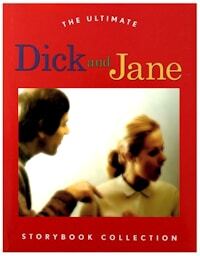
Let’s create Dick and Jane, and work from Dick’s side of things.
Dick meets Jane, they strike up a conversation, and they decide they like each other. They decide to date.
Now, as soon as they met, each began to create a data file. For Dick, there is a “Jane file,” and it’s filled with bits of information selected by Dick. Initially, he filled it with “enchanting” bits: for example, hormonally driven data about her appearance, smell, what she wears, how she sounds. Let’s call this data, “All the things about Jane that I turn myself on about.”
As time goes by, biographical data is added, as are “likes and dislikes.” Sexual preferences are added as they occur. Safe topics, unsafe topics are added to “do and don’t” lists.
This adding process goes on, not only when Dick and Jane are together, but perhaps more importantly, when Jane is absent. It is during the absences, especially, that Dick attaches meaning to the bits of data in his “Jane” file.
Hopefully, you see the problem emerging. THE interpretation Dick made has absolutely nothing to do with Jane.It’s, “Hmm. In the middle of the meal, right after I talked about baseball, Jane got a pained look on her face. She must hate baseball.” Dick inserts “Do not talk about baseball” in the “don’t” file.
All Dick knows for sure is that an expression came over Jane’s face during a conversation about baseball. All the rest is Dick, making guesses, without checking with Jane.
And here’s the weird part. All of the data collected about Jane is also completely about Dick. (In other words, Dick doesn’t know dick about Jane…)
This is where I lose most people, so stick with me. Let’s set things up for the inevitable disaster, and then return to commitment.Initially, Dick is simply turned on by Jane. He likes the length of her skirts, the choice of her clothes and the way she smells. Into Dick’s file goes, “Jane is one sexy woman. Everything about her turns me on.”
During sex, Jane goes, “Mmmm.” And Dick thinks, “Boy, Jane really likes it when I do that. She thinks I’m a great lover.”
This is Dick, inventing things. Dick has created an expectation and a story about who Jane is, based upon his observations and his interpretations.
He totes it all up, and decides that Jane is the woman for him. He decides he’s ready for a commitment.
Dick is about to commit himself to a relationship to the imaginary woman he has created in his head.
We jump ahead to after the engagement, or after the moving-in-together, or after the marriage (the thing Dick committed to, with Jane) and one day he rolls over in bed. Jane is staring at him. She’s dressed in a ratty tee shirt, has morning breath, and says,
Dick, we have to talk. I’ve been thinking about it, and our sex life sucks. You’re the worst lover I’ve ever had. And not only that, you refuse to do what I tell you to do.”
If Dick is normal, he either slinks out of bed or fights back. The fighting back will be,
“You’ve changed. You’re not the woman I married (or whatever.) All the times in the past, you liked it. I heard you go “Mmmm.” You lied to me about who you really are!”
Jane defends and explains. He thinks “betrayed!”, and she thinks, “deceived!”
And on and on. If they go to therapy, they’ll each tell the therapist how betrayed they are. “He/she is not the person I thought he/she was.”
Damn straight.Jane is who Jane is, and who Jane is, is who Jane is today. Added to all the yesterdays. And tomorrow, she’s everything she was and who she is tomorrow.
And thus it is with everything external that I choose to commit to. A religion. A political party or type. A job or career. Everything changes. Including you. Minute by minute. (You are changing, whether you know it or not, as you read this.)
When we get caught into thinking we commit to a person, we set ourselves up for failure, as such a commitment is to that person at a particular point in time. Absolutely no one living is a static entity, and no one you know is as you perceive them. The picture in your head, as you describe someone, is data about how you interpret that person.
It is not a description of the other person. Ever.Here’s an example that all siblings know. You’re sitting with your brother or sister, talking about a past event, and you can’t agree on any of the details. If you get the joke, you laugh. If you are dumb, you argue about who is right. And all that is happening is that both of you were there, observing the same event, from two distinct perspectives. Each of you took in what was important to you, and each of you interpreted it. Thus, your description is about you, not about the event.
When couples are shown a video tape of the event just disagreed about, both look at the tape and go, “See! I was right!” Even with the tape, they still see what they are predisposed to see.So, if you can’t commit to an external without eventually disappointing yourself that the external shifted, what can you commit to?
You commit to a way of relating that works.Next time we’ll explore this, but here’s the short form:
I can only commit to an action — to something I will do.I commit to being in relationship with you. Here is what I commit to:I will be open, honest and vulnerable in my daily communication with you.I will tell you, today, who I am and what I am thinking. I will tell you, today, everything I have done, and what it meant to me.I will listen to you with curiosity and interest, today. I will accept that you are who you are today, and will integrate who you are today with my picture of you from “yesterday.”I will make myself fully available and present to and with you, today, and engage in clear and concise communication with you for not less than 30 minutes, today.I will own all of my thoughts, feelings, emotions and interpretations, working to take full responsibility for each and every one of them. If I slip and go into blaming, I will stop myself, apologise, and return to self-responsibility.I will actively encourage you to listen to me and to actively hold me to the performance of what I have committed to.I will commit to all of these things, without any expectation of anything from you, as all I can ever commit to is to what I can and will do.Facebook Twitter


